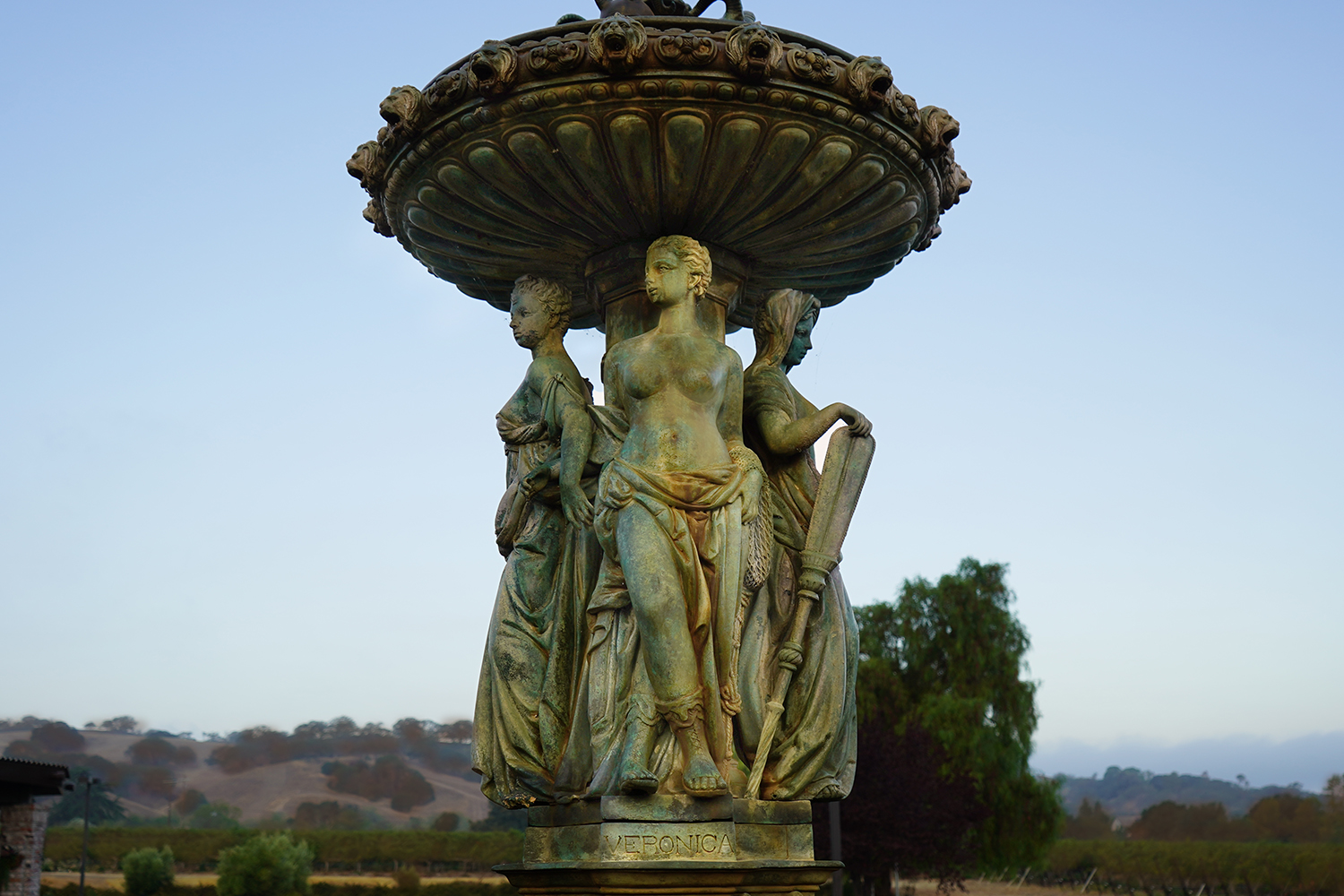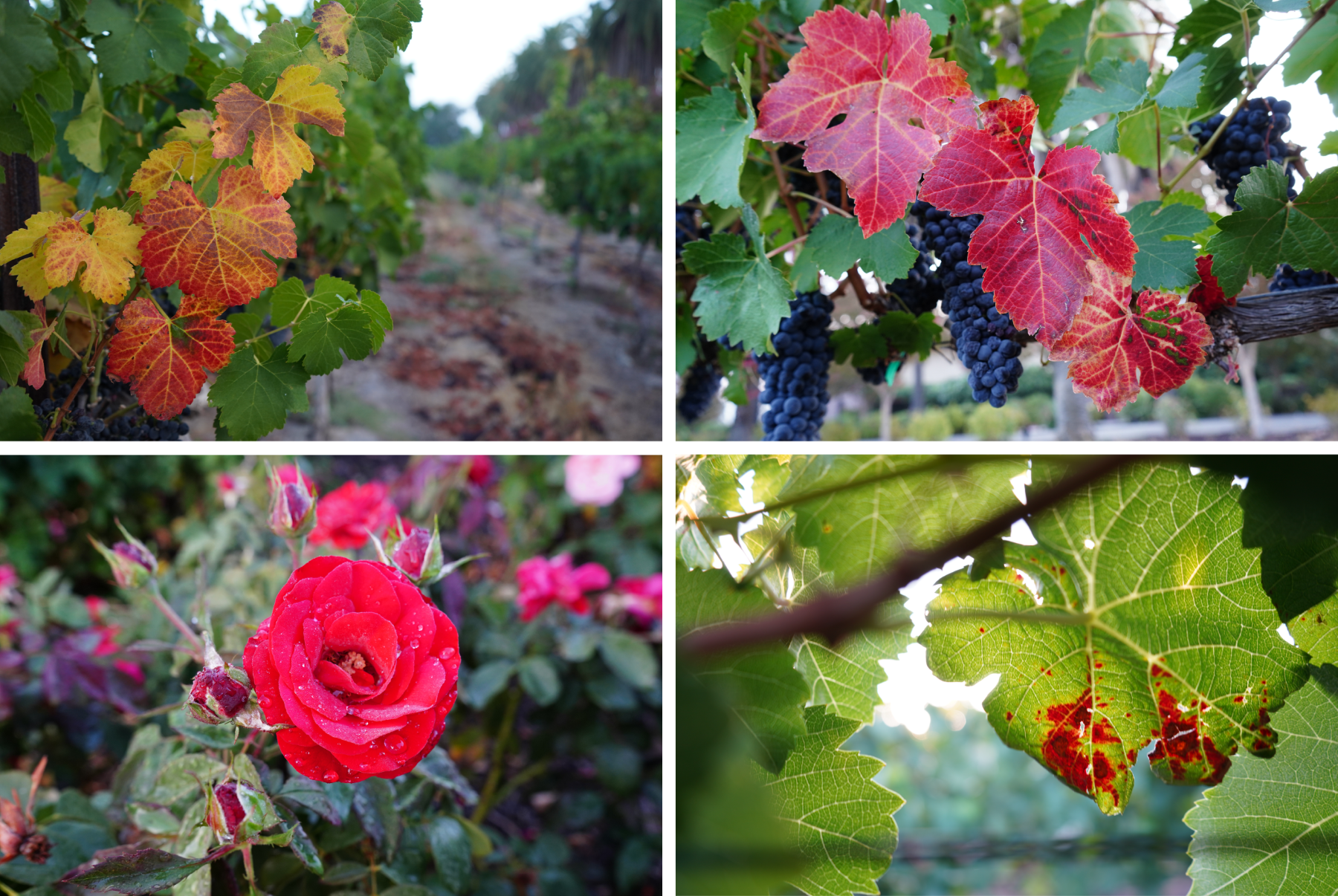Autumnal Harvest Traditions
 Veronica, the maiden of Autumn, looks out over the Estate.
Veronica, the maiden of Autumn, looks out over the Estate.
Now that our harvest is in full swing, there is never a dull moment in the cellar as our Winemaker and his team work their magic on the fruit to craft wines from the best of the best. As the labor of harvest time progresses, we can’t help but dream of the beauty and wonder of fall. Throughout history, the autumnal season of harvest has been the focus of many myths, folktales, superstition, and poetry. To harvest is to join in the rich and storied history of millennia of farmers and their toil. To celebrate the richness of fall is to join in the festivities of many generations before us. Today, we’ll endeavor to do both by diving into the charming stories, traditions, and superstitions of days gone by.
Autumn is one of the most stunning times of year, as the world turns from lush green tones into shocking yellow, burnt orange, and rich scarlet. Prior to the modern era, this season would define the seasons to come. Scarce harvests threatened their livelihoods. From the crucial nature of Autumn and harvest sprang forth superstitions of every kind.
Native American Cherokee lore stated that the pattern of the fall season was set forth early in the life of the world. An injured sparrow sought shelter during harsh weather, visiting oak, maple, and other leafed trees, but all rejected him. Only the pine, with his bushy needles, accepted and protected the sparrow. Because of their callous treatment of the sparrow, the other trees were cursed to lose their leaves every year when the harsh weather was on its way.
In other traditions, It was thought that the earlier the colors of fall peaked on the trees, the milder the winter would be. If a red rose bloomed in the fall, it was taken as an omen that a marriage was in store for someone in the nearest home. Anyone spry enough to catch a leaf as it fell from a tree before reaching the ground would be safe from colds that winter.
Autumnal superstitions still impact our lives today. The old English calendar had “quarter days,” events marking their times and seasons in March, June, September, and December. Michaelmas, the quarter day of autumn, fell on September 29th and marked the deadline for harvesting. This is why the school year traditionally began in September.
Old harvesting practices also gave the “Harvest Moon” its title. It is the name given to the full moon closest to the Autumnal Equinox, which appears unusually close to sunset and would give field laborers valuable light to continue working by. These workers were traditionally supplied with a large ration of hard cider each day. Often the farmer’s wives would also lay a “teatime” spread for the workers, as going home to eat would waste valuable daylight. At that time, a single field worker could be expected to harvest one acre per workday. In the 1870s, the horse-drawn reaper binder represented a huge forward step in harvest technology, because 2 men could harvest an acre in a single hour when using this device. How far we have come!
 Autumn begins to touch the Estate with a crimson kiss.
Autumn begins to touch the Estate with a crimson kiss.